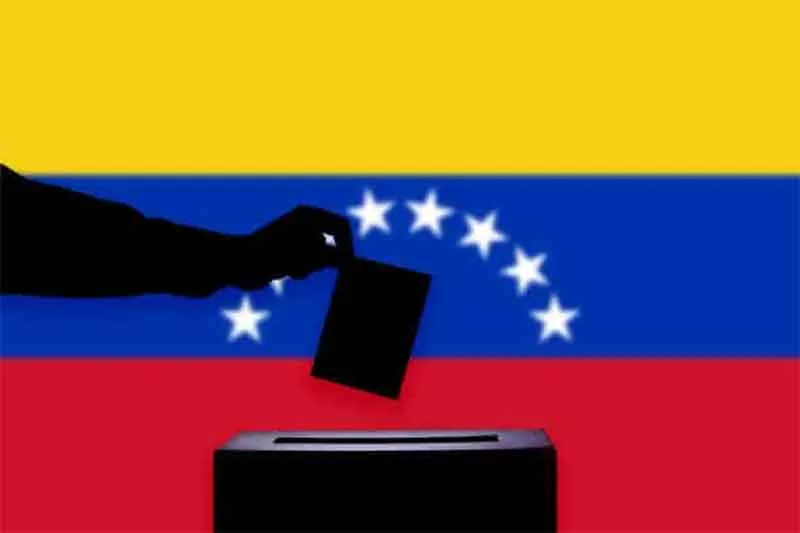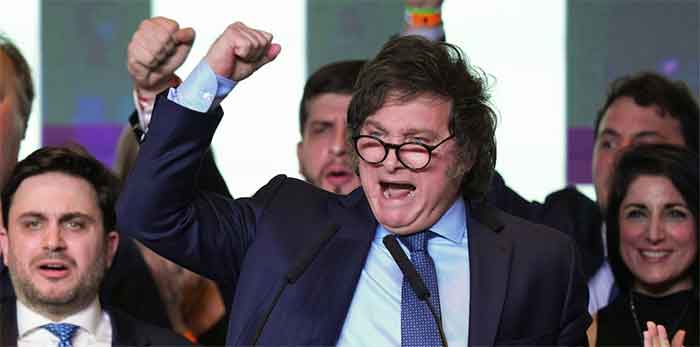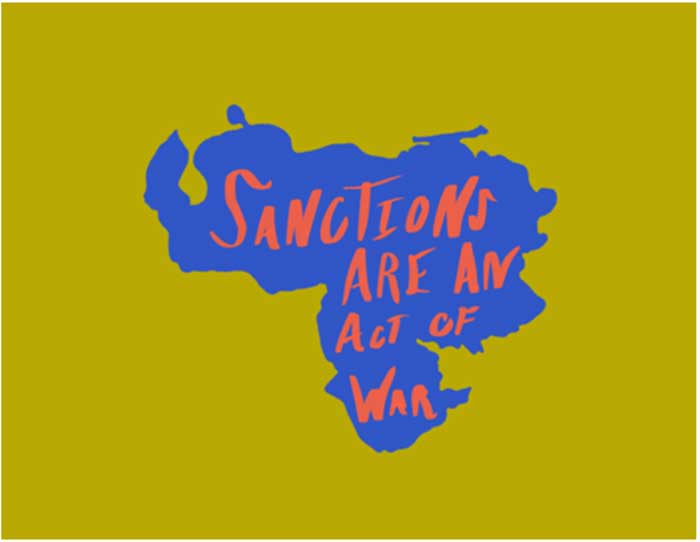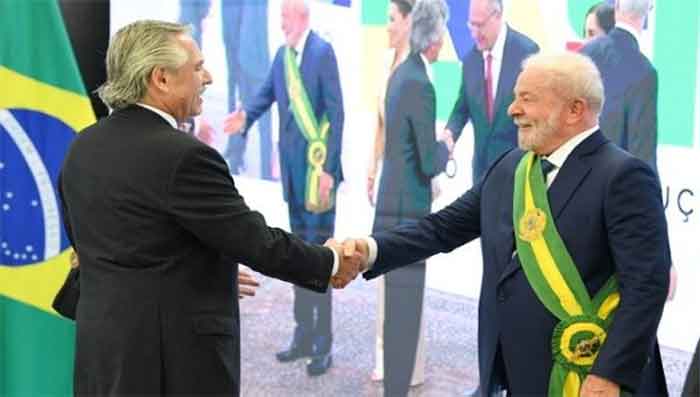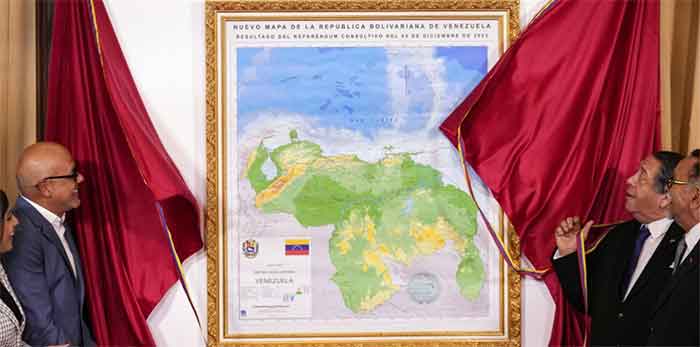
If there were any misgivings about the actions undertaken by the government of Venezuela around the territorial dispute with Guyana, the joint military exercises between Guyana Defence Forces (GDF) and the US Southern Command (SouthCom) explain what really lies behind things.
Venezuela’s claimed territory, also known as Guayana Esequiba, is 159,500 square kilometres west of the river of the same name. SouthCom (the Pentagon) never intervenes in territorial disputes, unless the territory in question contains resources of geopolitical importance for US imperialism.
In an interview on January 21 2023, SouthCom Chief Laura Richardson stressed how important Latin America was for US foreign policy because of “its rich resources,” a point she has been making since her appointment in 2021.
She went on to highlight “the largest oil reserves, including light and sweet crude, discovered off Guyana” and “Venezuela’s rich oil, copper, and gold resources.”
The basis of Venezuela’s claim is the 1777 Map of the General Captaincy of Venezuela, created by colonial Spain on September 8 of that year, which clearly includes Guyana Esequiba.
On the eve of Venezuelan independence in 1810, Spain’s official map of the Captaincy also included it. Since Venezuelan independence, all its constitutions (1811, 1819, 1821, 1830, 1857, 1858, 1864, 1874, 1881, 1891, 1893, 1901, 1904, 1909, 1914, 1922, 1925, 1928, 1931, 1936, 1947, 1953, 1961 and the Bolivarian Constitution of 1999) have included Guayana Esequiba as integral part of its territory.
Venezuela proclaimed its independence in 1811 and Simon Bolivar’s liberating efforts led in 1821 to Great Colombia, comprising Venezuela and Colombia. The newly created republic, as early as 1821, complained of the continuous invasions of English colonists into Venezuelan territory.
Great Colombia’s vice-president sent a formal note to Britain’s prime minister, Lord Castlereagh that his country’s eastern limit “ends at the Essequibo, the left bank of this river being the border with Dutch Guiana” (today’s Suriname). Great Colombia underwent geographical expansion and variations in 1822, 1824 and 1826, but it always comprised Guayana Esequiba.
In 1825 the British empire acknowledged its independence with Guayana Esequiba as an integral part of that state. With the separation from Great Colombia in 1830, Venezuela’s constitution established that its territory comprised the region [called before 1810] “the Captaincy General of Venezuela.” In 1834 Britain recognised Venezuela’s independence.
The problem was Perfidious Albion (Napoleon’s accurate name for British imperialism). Britain commissioned Robert Schomburgk, a botanist, to carry out a survey of British Guiana in which he unilaterally drew a new line of demarcation of the border that gave British Guiana 80,000 square kilometres of Venezuelan territory.
More “Schomburgk lines” were drawn adding more Venezuelan territory to British Guiana that by 1897 had amounted to 167,830 square kilometres (see in map how rapacious this was). In 1887 Venezuelan president Guzman Blanco broke relations with Great Britain because the British refused to withdraw from Guayana Esequiba, thus forcing arbitration.
Venezuela was then in turmoil. A civil war had broken out in 1892 and Venezuela was in no position to pay debts to France, Spain, Belgium, Britain and Germany. As civil war broke again in 1898, a European coalition was planning military intervention (in 1902 a European naval force blockaded Venezuela when British and German warships bombed Puerto Cabello).
By 1897 the territory controversy was nearly 60 years old and the US’s heavy intervention forced Venezuela, following the signing of the Treaty of Washington, to accept an Arbitration Commission made up of five members: two nominated by the US Supreme Court, two by the British government, and one, non-Venezuelan, to be chosen by the Venezuelan government.
Venezuela chose former US president Benjamin Harrison as its counsel. Unsurprisingly, the Arbitration Commission in 1899 awarded almost 90 per cent of the disputed territory (see Venezuelan map) and all of the gold mines to Britain but gave no reasons for the decision.
In 1949, a (posthumously published) memorandum by Severo Mallet-Prevost, official secretary of the US/Venezuela delegation to the Arbitration Commission, revealed that Friederich Martens, chair and judge of the 1899 Paris Arbitration Commission, contravening the Washington Treaty rules, had colluded with the two British judges to coerce the other judges to arbitrate in favour of Britain.
Thus, Venezuela rejected the 1899 Arbitral Award as fraudulent. In 1962 its Foreign Affairs Minister, Falcon Briceno, demanded a vindication of his country’s rights over the disputed territory. Venezuela pursued the case for its historical claims to Guayana Esequiba until Britain finally agreed to start negotiations through the signing on February 17 1966 of the Geneva Agreement.
This agreement was recognised by Guyana at the moment of its independence on May 26 1966. Thus, Britain accepted both that the controversy existed and a protocol to resolve it, confirming the 125-year-old dispute had been caused by British colonial encroachments. The 1966 Geneva Agreement is still valid and current mainstream media arguments that the dispute was settled in 1899 are simply false.
In 1993, contravening the Geneva Agreement, Guyana approved an exploration by ExxonMobil in the disputed Statebrok Block, and in 2000 huge deposits of gas and oil were discovered. In 2000, president Hugo Chavez rejected the concession Guyana had granted to US company Beal Aerospace Technologies Inc to install a space launch platform.
However, he made it clear that Venezuela would not be an obstacle to projects of social benefits such as “access to water for human consumption, new roads, energy programmes and agricultural activities.”
In 2007, the Bolivarian government ejected ExxonMobil from Venezuela’s Orinoco Basin oil fields because the oil giant refused to comply with new laws. Chavez effectively nationalised foreign oil companies and increased their taxation of ongoing projects from 34 per cent to 50 per cent.
ExxonMobil turned its attention to the disputed Essequibo region, and its exploration, under the Production Sharing Agreement with Guyana, led in 2015 to the discovery of one of the largest oil finds in recent years (Exxon was given 75 per cent of the oil revenue toward the cost of recovery and is exempt from any taxes). At the time, Exxon’s CEO was Rex Tillerson.
In March 2015 president Obama’s declared Venezuela “an unusual and extraordinary threat to US national security” and in May 2015, ExxonMobil announced the discovery of oil in Guayana Esequiba. In September 2015, Tillerson and Guyana’s president, David Granger, met in New York where they planned their strategy against Venezuela which involved ending the 1966 Geneva Agreement and pressing the UN to go to the International Court of Justice (ICJ) with State Department support.
In September 2016, Tillerson and Granger met again at the UN and in December UN secretary-general Ban Ki-Moon sent the dispute to the ICJ. In February 2017, Tillerson was appointed US state secretary by president Trump. In 2018 Guyana submitted a complaint to the ICJ about the dispute which the latter accepted in 2020, even though only one of the parties was in favour of doing so.
Between 2015 and 2023, Guyana joined the destabilisation against Bolivarian Venezuela. It voted 16 out of 23 times against Venezuela in the Organisation of American States. Guyana also joined the now-deceased Lima Group and signed 16 out of 45 communiques seeking to oust President Maduro’s government. In 2019 Trump had adopted the policy of “maximum pressure” to oust the Venezuelan government.
With the election of Irfaan Ali as president in 2020, Guyana massively escalated the conflict to the point of formally proposing SouthCom military bases in its territory as “protection” against Venezuela. SouthCom officials regularly visit Guyana and hold joint military drills leading Irfaan to engage in aggressive rhetoric — “Guyana Defence Forces are on high alert and in contact with SouthCom, who are on alert.”
Irfaan has granted oil concessions in waters that are not even part of the dispute. All the while, Exxon extracts around 500,000 barrels per day in Venezuelan sea waters.
Thus, Venezuela responded by holding an overwhelmingly supported referendum on December 3 2023, conducted within the 1966 Geneva Agreement spirit and as a confirmation of the government’s position of not recognising the jurisdiction of the ICJ in the controversy surrounding the Essequibo.
Furthermore, Venezuela’s National Assembly passed a unanimous resolution creating the new, Guayana Esequiba state, and prompted by the growing and persistent presence of SouthCom in Guyana, it also established a High Commission for its defence.
The Venezuelan government is taking these and several other measures making it abundantly clear that the threat is not Guyana but Exxon and the US, which have spent years seeking to violently overthrow the Bolivarian government.
However, President Maduro has repeatedly called upon President Irfaan to engage in dialogue and avoid being trapped in the Exxon-US push for military conflict. The Venezuelan government also called upon the government of Guyana “to desist from its erratic, threatening and risky behaviour and return to the path of direct dialogue, through the Geneva Agreement.”
Thankfully, thanks to direct contacts between President Maduro, Brazil’s Lula and Ralph Gonsalves, on December 10 2023, the government of Guyana accepted President Maduro’s proposal for dialogue to “maintain Latin America and the Caribbean as a zone of peace, without interference from external actors.”
The meeting was scheduled for December 14 2023 in Saint Vincent and the Grenadines to be hosted by its president, Gonsalves. Venezuela’s Foreign Minister Yvan Gil thanked Celac and Caricom for their efforts in promoting the Venezuela-Guyana dialogue and sponsoring this most important meeting.
We must all support Venezuela’s stance that “the territorial dispute will only be resolved through dialogue, mutual respect, and commitment to preserve the region as a zone of peace, free from interference,” and say no to the US-ExxonMobil push for war.
Francisco Dominguez is head of the Research Group on Latin America at Middlesex University. He is also the national secretary of the Venezuela Solidarity Campaign and co-author of Right-Wing Politics in the New Latin America (Zed, 2011).
Originally published in Morning Star

